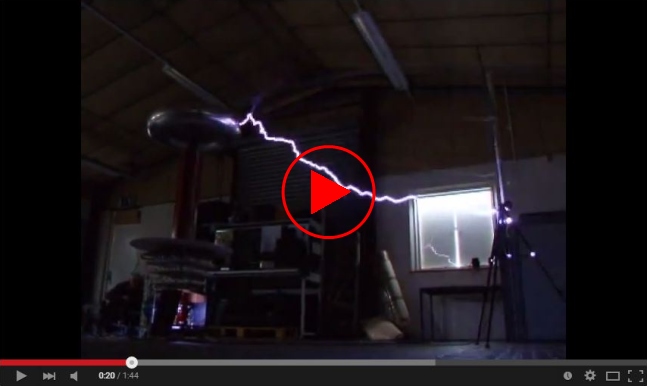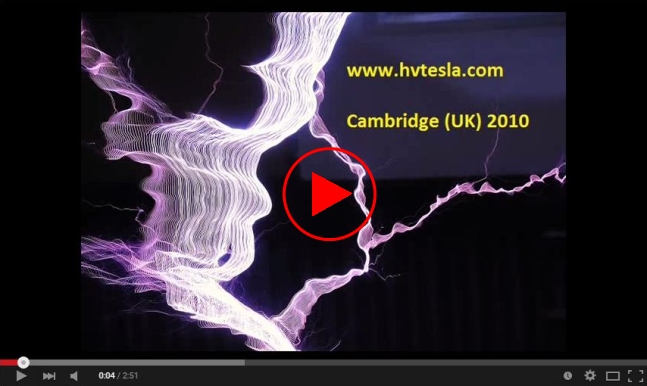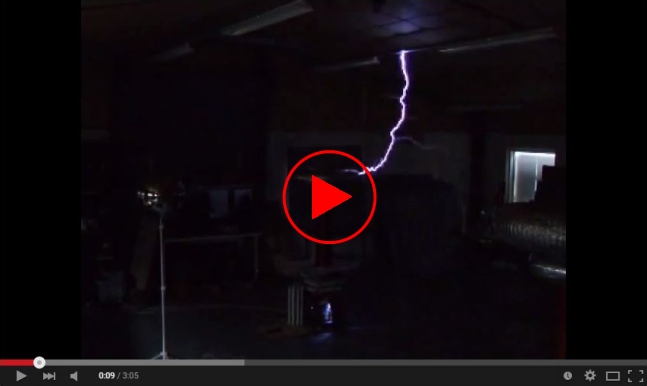UK Teslathons
Cambridge 2010
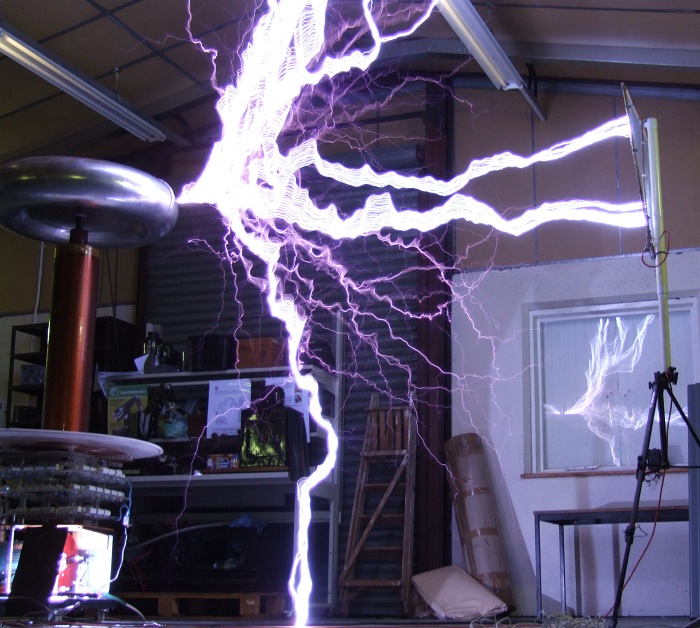
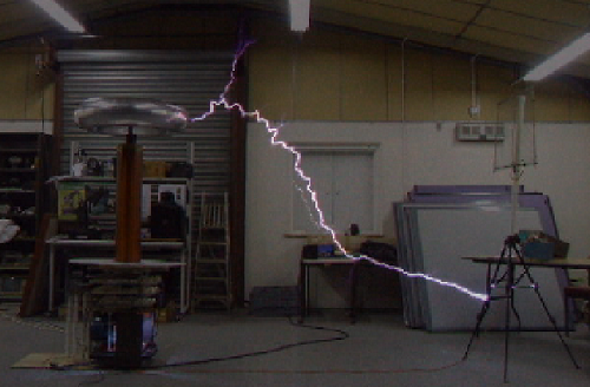
My High Point......Ten Foot +
A nice 10 foot+ strike (point to point straight line distance). (taken from a video)
The height of the toroid's break-out point had previously been measured at 74 inches high, while the distance to the strike screen (located to the right and horizontal to the toroid) measured 97 inches (8 foot 1 inch) in the horizontal plane.
After the video was analysed the coil was setup again to those measurements and using the image the exact strike point could easily be found and measured.
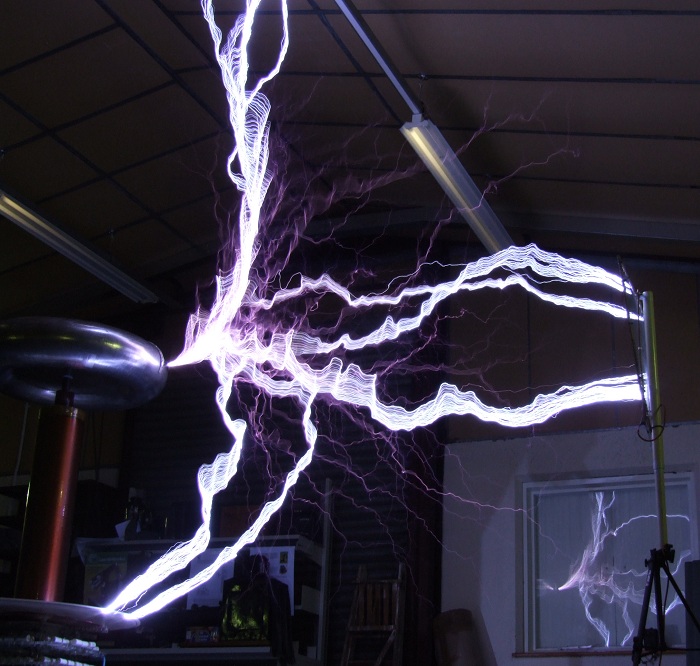
Once again, the city of Cambridge acted as a magnet to those with an interest in tesla coils, as for the eleventh time it hosted the annual (2010) Cambridge Teslathon.
I therefore decided to lug a lot of what is basically, copper wire, vinyl and heavy iron, 170 miles up the motorway network, swearing that I will never do it again, exactly as I had said last year, and, no doubt, as I will say again next year.
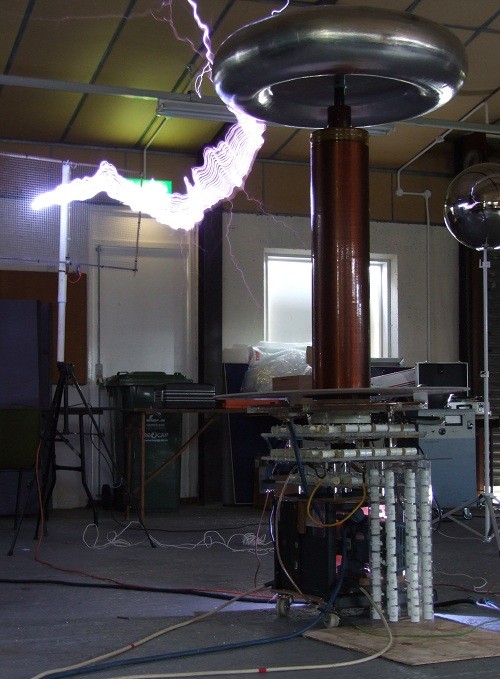
My coil had recently had an extra 30nF added to the MMC, as has been explained Here, and this extra capacitance seemed to have improved the intensity and ferocity of the sparks.
I ran the coil initially with a break-out point and found no difficulty at all constantly hitting an earthed screen erected 8 feet away (measured distance)
Unfortunately the overhead lighting conduits were also at an 8+ foot distance and they acted as a limiter on what I could really achieve.
Most of the runs on the second day of this two-day event were done without a breakout point (BP). This changes considerably how the coil behaves at start-up. With a BP fitted, the coil would start to fire when the variac was inputting just 50V. (250v normal mains voltage - UK)
Without the BP fitted, I found the coil would only breakout when the input reached 200v to 210v. This shows how the now larger minor diameter of the new toroid was doing its job and holding back the charge till it was higher in value. When the coil did eventually break out, it was both violent and loud, like a firecracker going off.
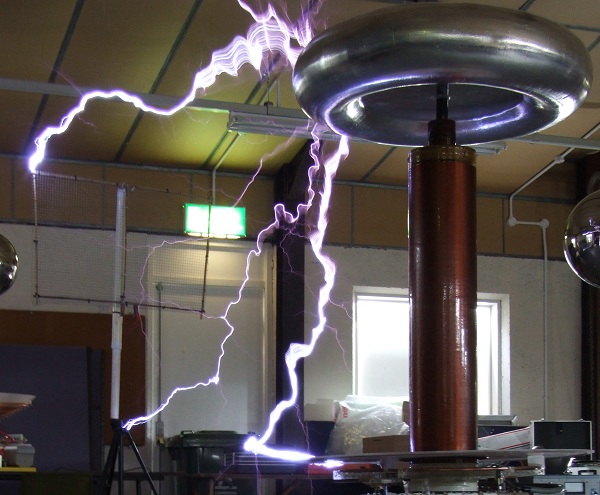
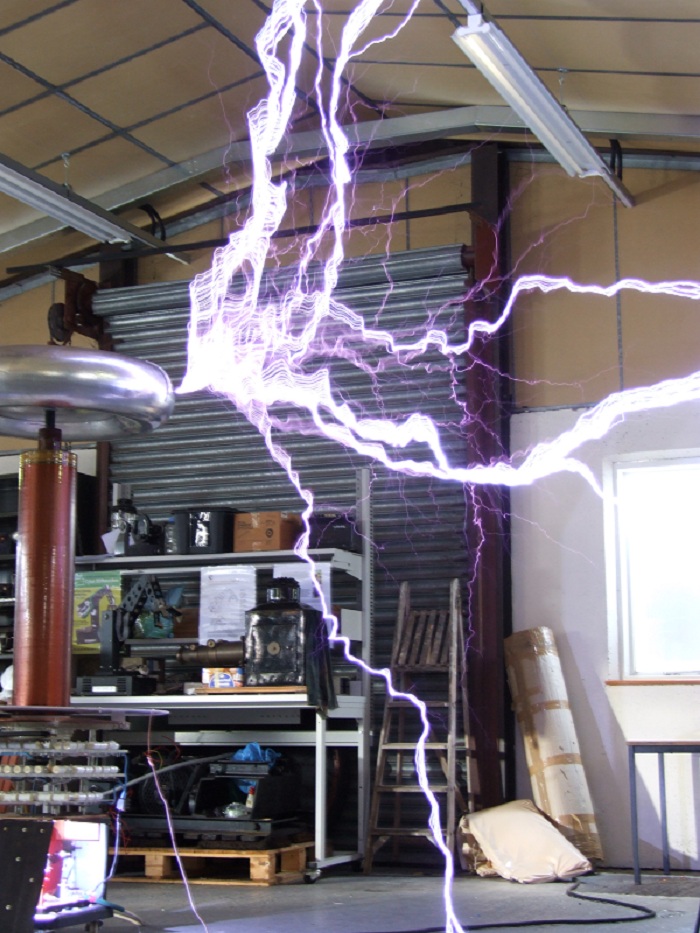
With my previous 6 x 24 inch toroid, you could approach within six feet without any effect. I presume from this behaviour that the larger toroid creates a much broader field.
I next ran a couple of artificial streamers from the toroid (bits of thin wire) to simulate the capacitance of real streamers and found that the frequency then dropped down to the region of 70 kHz, dependant on the streamer length.
I therefore tuned the primary to 70 kHz to allow for this. This meant the coil should be closely in tune when a streamer forms. Prior to that happening the tesla coil is obviously slightly out of tune, but it does not seem to be too critical of this, and in fact seems to benefit more by being in tune when a streamer is created.
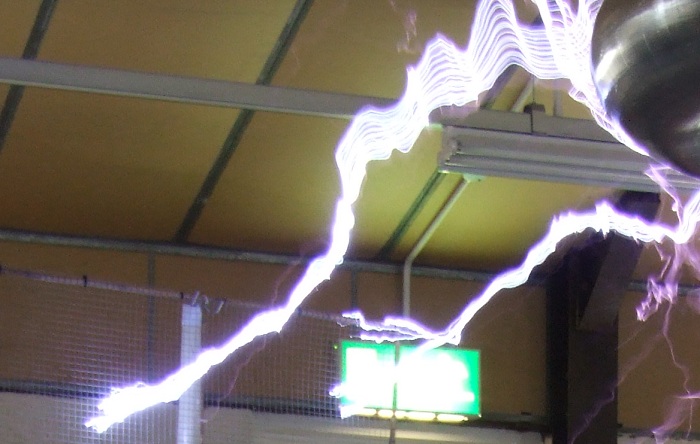
It was not an event entirely without incident however. At one time, a fluorescent lighting tube decided to commit suicide by falling on someone's head whilst they were filming a run of my coil.
The person though is the tesla coil world's equivalent of an 'Ambulance Chaser', as the first sign of any smoke will always be well documented on his website. (See Here for the gory details)

